Setting up Physical Web in Chrome
The Physical Web enables you to discover web pages associated with everyday objects and locations. It is powered by bluetooth low energy (BLE) beacons that broadcast URLs using the Eddystone format. Various mobile browsers are working to display these URLs. This document explains how to use the Physical Web on Chrome and Nearby Notifications.
If you experience any issues with this setup process, reach out to physical-web-discuss@googlegroups.com.
Nearby Notifications
Nearby Notifications is an Android feature available on devices running Android KitKat (4.4) and above. When you are near a bluetooth beacon (and have bluetooth enabled), you will receive a notification for the Physical Web.
When you are near a beacon, you will see the following:
-
First, check that you have an active data connection as well as Bluetooth and Location turned on. The notification shade provides an easy way to check that these requirements are met.
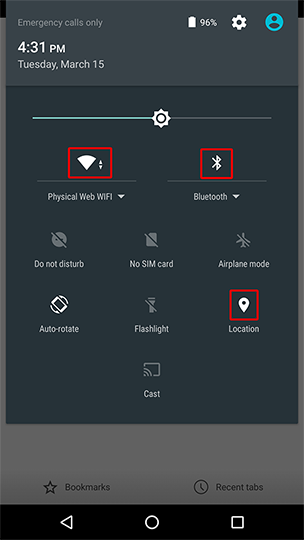
-
Swipe down on the notification shade when you first encounter a beacon. You will receive a notification alerting you about nearby web pages.
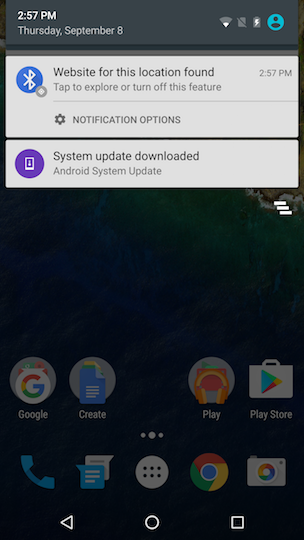
-
Tap on the notification to opt into future Nearby notifications. Opting in will take you to a list of nearby URLs.
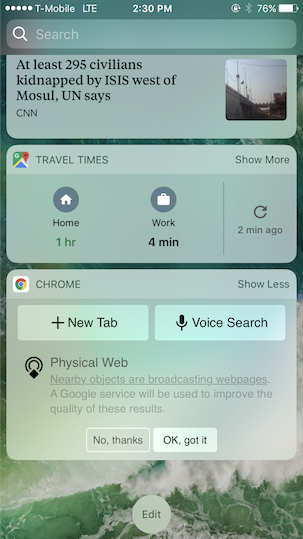
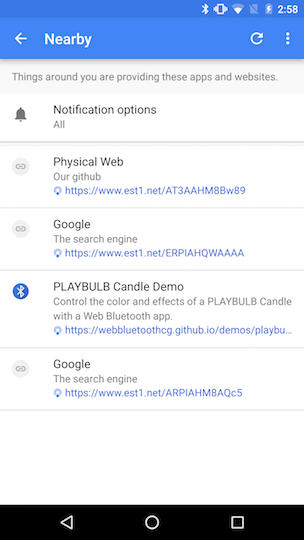
-
When you are near a beacon in the future, you will see a notification informing you of nearby URLs.

-
To enable or disable Nearby Notifications in the future, visit Settings > Google > Nearby Notifications.

Chrome on Android
The Physical Web is available starting Chrome version 49 and on devices running Android KitKat (4.4) and above. When you are near a beacon for the first time (and if you have Bluetooth enabled) you will receive a notification describing the Physical Web.
If you’d like to explicitly turn on Physical Web, try the following:
- Check that you have an active data connection as well as Bluetooth and Location turned on, as outlined above in the Nearby Notifications section.
-
Enable the Physical Web privacy option from within Chrome in Privacy settings:
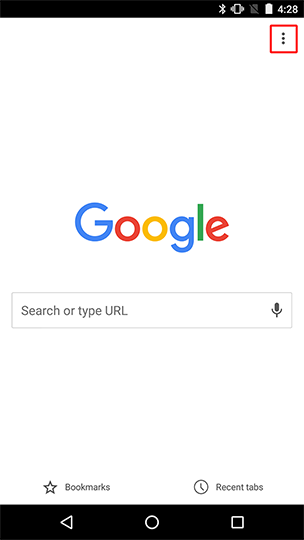

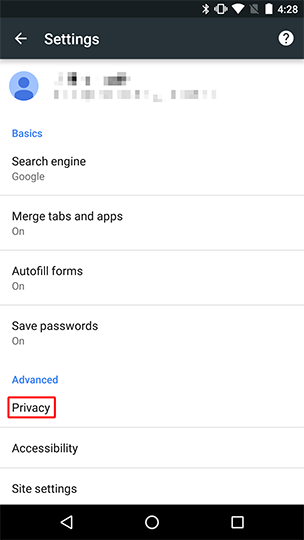
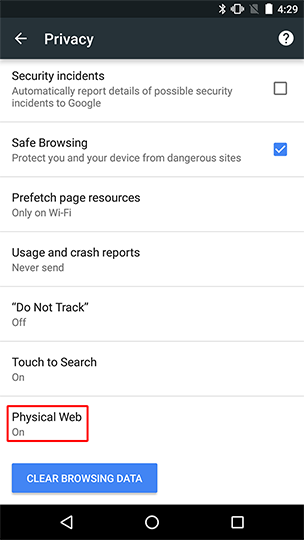

(Marshmallow ONLY) On Marshmallow (Android 6.0) devices, the Physical Web requires that Chrome is granted the Location runtime permission. If you have not already granted this permission, enabling the Physical Web privacy option will automatically prompt you to grant it. This step is not necessary on pre-Marshmallow versions of Android.

-
To see URLs when you are nearby a beacon in the future, swipe down on your notification shade to see a low priority notification informing you of nearby Physical Web URLs.
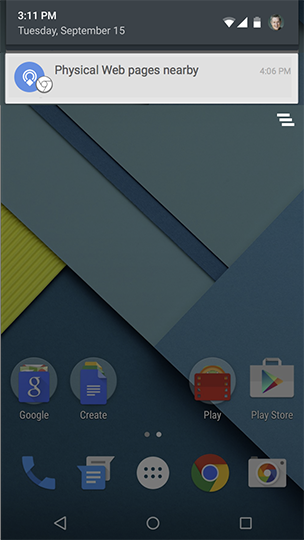
- Tap on notification. You will see a list of nearby URLs.
Chrome on iOS
Chrome for iOS supports the Physical Web as of July 2015. You can take the following steps to discover Physical Web URLs via Chrome for iOS:
-
Turn on Bluetooth if not enabled.
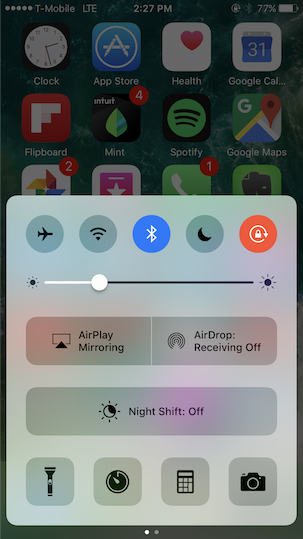
-
Swipe down notification shade and swipe to the left to visit ‘Today’ view. Scroll to the bottom and tap ‘Edit’.
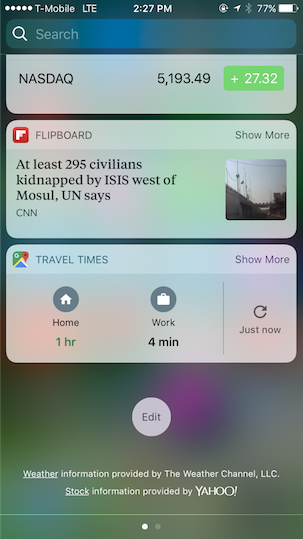
-
Scroll down to the ‘More Widgets’ section and add the Chrome widget.
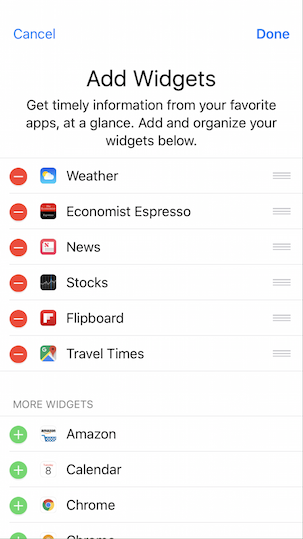
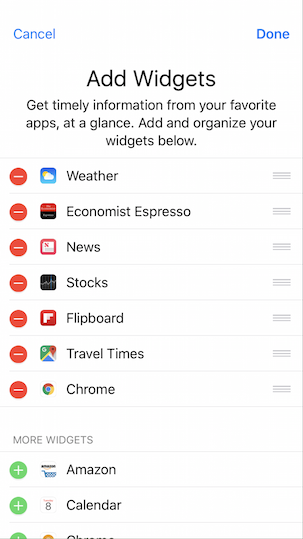
-
Click ‘Done’ and scroll to the Chrome widget. Opt in to the Physical Web. If the opt-in message does not appear, toggle the "Show More" button until the widget expands.

-
Go near beacons broadcasting Eddystone-URL sites. You should now see beacons in the widget.
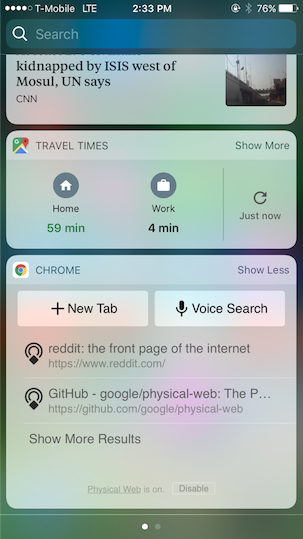
Potential issues
-
I don’t see any URLs around after successfully going through these steps.
It’s possible there aren’t any BLE beacons nearby. If you have a compatible Nexus device (Nexus 6, Nexus 9, Galaxy Note 4, Galaxy S6, Galaxy Tab S), you can create a virtual beacon using the Beacon Toy app. Otherwise, consider setting up your own beacon.
Additionally, nearby broadcasted URLs must be public. The URL will be accessed by a Google service to resolve the URL and retrieve page metadata. If the page is not accessible from the Internet (for instance, it requires authentication or is only accessible from an internal network) then it will not appear in the list of results.
Finally, all URLs must resolve to an HTTPS URL. For our users’ security, we require all Physical Web pages be served over HTTPS. You may use a URL shortener that generates HTTP URLs as long as the shortened URL resolves to an HTTPS URL.
